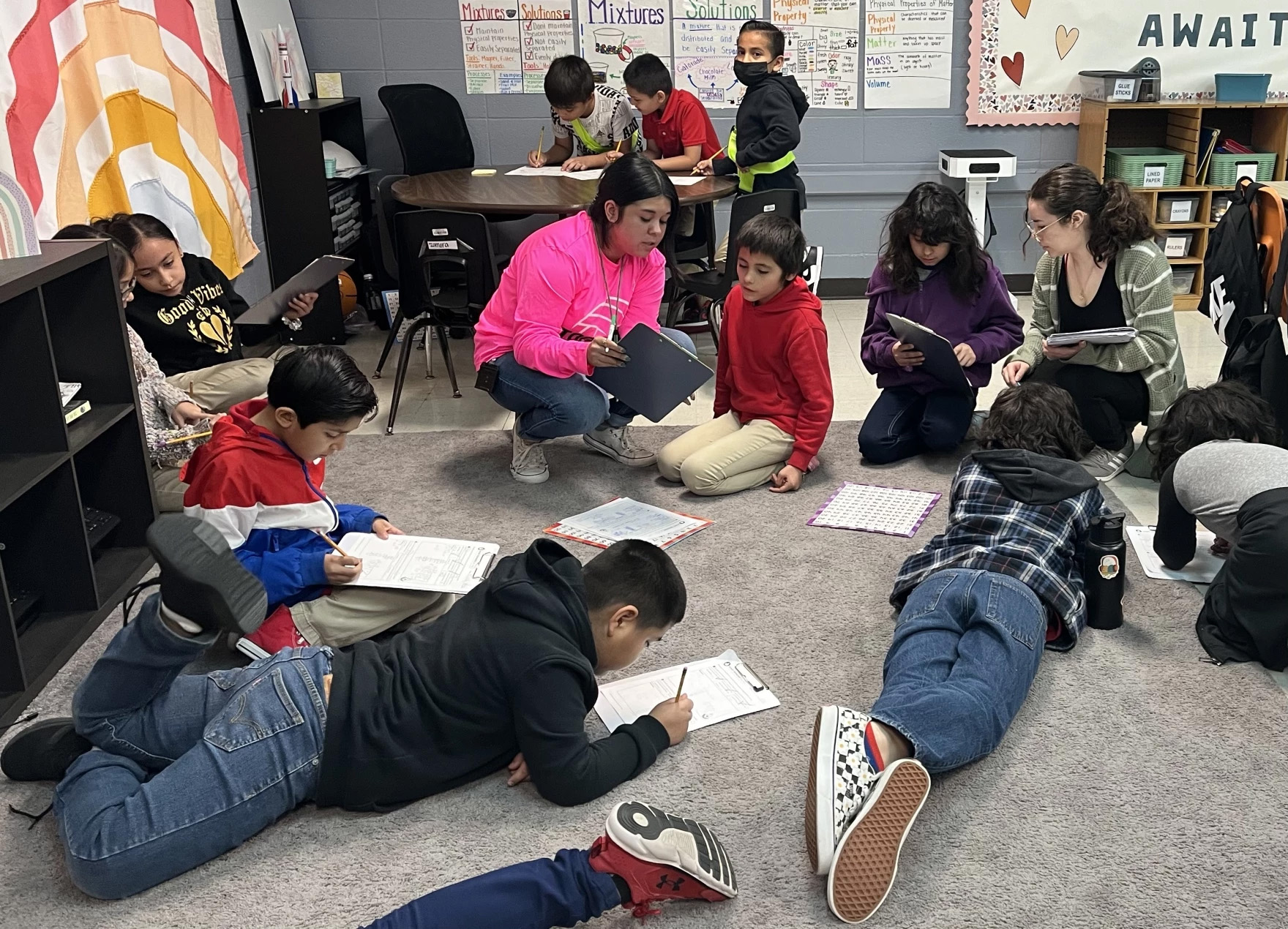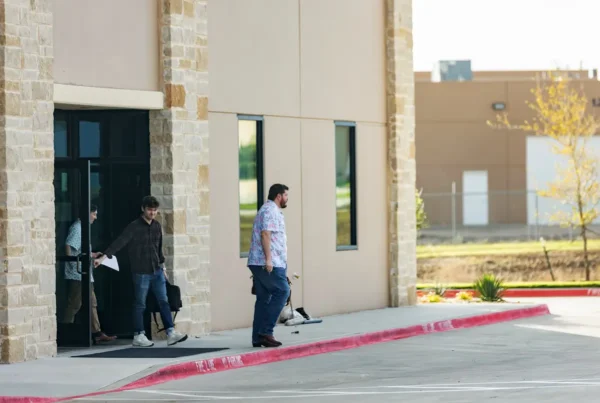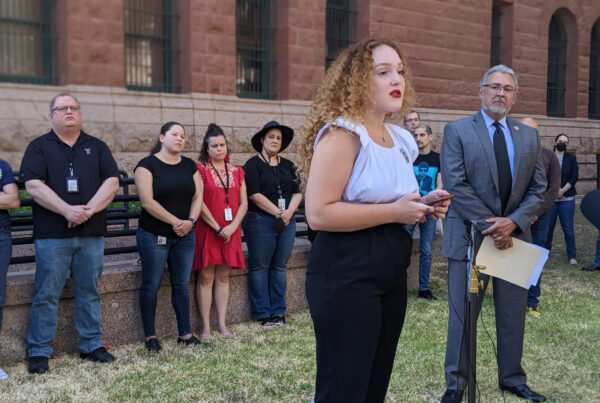From Texas Public Radio:
This is the second story in an ongoing, data-driven TPR series called Golden Pennies.
A little over 30 years ago, the Texas Supreme Court ordered the Texas Legislature to fix the state’s unequal school funding system. The fix lawmakers chose is recapture, often called Robin Hood.
But according to a TPR analysis of state data, even with recapture, today’s school funding system still isn’t fair. And, because the funding system is also really complicated, the ways it’s unfair aren’t very well understood.
Public education advocates believe confusion about how funding works in Texas, and the inequities hiding behind the complicated system, are being used to bolster the argument for creating a voucher-like program that would let parents use public dollars to pay for private school.
1. The property tax disconnect
There are four main elements that make Texas school funding confusing and unfair.
The first is a side effect of recapture that doesn’t make things less equal, but does defy common sense: In Texas, when property values rise, schools don’t automatically get more money.
“Your average homeowner is like, ‘Look, I’m paying more and more every single year. Why are my schools still underfunded, overcrowded, my teachers underpaid? Obviously, the schools are doing a bad job with my money,’” said Chandra Villanueva with the progressive-leaning think tank Every Texan.
Here’s why there’s a disconnect: In order to equalize funding across property-poor and property-wealthy school districts, state sales tax, local property tax, and money the state collects through recapture all goes into the same pot.
Texas then uses a formula to decide how much of that money goes to each student in public schools across the state. If school districts collect more in property tax than the formula says they are allowed to keep, the state takes that money and uses it instead of state dollars to pay for other schools.
That means when property values increase and property tax bills go up, public schools don’t get more money. They just get less state funding.
Because that fact isn’t well known, Villanueva said homeowners sometimes end up mistrusting schools and hating property tax.
That mistrust bubbled over at a town hall held by Harlandale ISD in San Antonio in March. The district’s superintendent, Gerardo Soto, was trying to explain to community members why Harlandale had a budget deficit and needed to close schools.
“Why do you keep saying we only can live off of our savings?” asked one woman at the town hall with frustration in her voice. “Where is the other money going to go? Is there not enough coming in?”
“Exactly,” Soto said.
2. Chronically low funding
The second reason the Texas school finance system can be unfair is that Texasconsistently ranks in the bottom 10 to 12 states for education spending per student.
Texas hasn’t increased school funding since 2019. Just to keep up with inflation over the last four years, state lawmakers would need to add almost $1,200 per student.
“Since the pandemic, what you see is now it’s costing more,” said Edgewood ISD Superintendent Eduardo Hernandez earlier this month. “Everything from just keeping the lights on, our water, our bills, our food, all of it is costing more.”
Hernandez said Edgewood is having to make do with less because it hasn’t received more money from the state. For instance, the district hasn’t been able to update its library books.
Edgewood is located in working-class neighborhoods on San Antonio’s West Side, but districts in low-income areas aren’t the only ones struggling to adjust to higher inflation.
Because the state decides how much funding school districts are entitled to — and because lawmakers haven’t increased that funding in four years, a lot of school districts in Texas are struggling to balance their budgets right now — including property-wealthy districts.
Three wealthy districts are so upset by thisthey’re rebelling, and refusing to pay their share of recapture this year.That includes Spring Branch ISD in Houston, where Lise Alpe is on the school board.
“It’s kind of that time to take a stand,” said Alpe during the board vote in August. “Given our severe budget deficit that we’re looking at for 2024-25, I think now is the time to say, ‘Come and take it.'”
Property wealthy districts have never really been fans of recapture, but Every Texan’s Chandra Villanueva thinks districts wouldn’t be so upset about it if state lawmakers adequately funded schools.
“We’ve been shortchanging our schools forever,” said Villanueva. “Why is recapture so high? It’s because that line, that basic allotment line has stayed so artificially low, because raising that would require us to give more money to everybody and collect less recapture. And so that’s a cost to the state.”
The basic allotment is the minimum amount guaranteed per student in Texas. It’s been set at $6,160 since 2019. The total amount a district receives per student is determined by plugging the basic allotment into a formula that considers the size of the district and student characteristics, like family income.
Bills that would have given teachers raises and raised the basic allotment failed during the Texas Legislative Session this spring because the Texas Senate tied their fate to private school vouchers. The current special legislative session could give school districts another chance to see more money, but the bill with the best chance of passing only increases the basic allotment by $75. And Gov. Greg Abbott plans to prevent even that small increase from passing unless state lawmakers first pass vouchers.
According to the Bureau of Labor Statisticsinflation calculator, the basic allotment would need to be raised to $7,350 just to keep up with inflation.
3. Golden Pennies
The third unfair part of Texas public school funding is an obscure and little understood element called Golden Pennies.
Golden Pennies are protected money, exempt from recapture. They were created in 2006, after property-wealthy school districts sued the state.
According to a TPR analysis of state data, in recent years, a couple dozen school districts have consistently gotten at least double the state average in per-student funding. They rake in anywhere from $25,000 to $50,000 per student, and Golden Pennies are a big part of the reason why.
“For some districts they’re like platinum pennies,” said Villanueva. “So, when you see these super-wealthy districts that are paying a lot in recapture, well, they’re not paying recapture on those Golden Pennies. They can keep all of it.”
Golden Pennies let school districts add additional pennies to their tax rate that aren’t subject to recapture. In other words, districts get to keep every penny of that property tax, no matter how much they collect.
That gives school districts with a lot of property wealth and not very many students a big advantage. The wealthiest districts collect up to $35,000 per student in Golden Pennies alone.
TPR will go into more detail about how Golden Pennies work, and what school districts are benefiting from them, in another story.
4. Automatic tax compression
The fourth and final unfair element of Texas school funding is something called automatic tax compression. It was introduced in 2019 as part of the state’s education overhaul.
What it means in practice is that, every year, every school district in the state gets a lower property tax rate. The state sends school districts a note that says ‘Here’s your new maximum tax rate.’
Before 2019, every school district in the state had the same maximum rate. Now, school districts have different rates based on how fast their property value grows.
Villanueva calls it one of the worst things to ever happen to Texas school finance since 1993, because it erases a major component of the equity recapture was created to fix.
“That was really heartbreaking for me to see them make it so that you could have any random tax rate and get the same full funding as anybody else,” said Villanueva.
The idea was that every school district taxing at a certain rate should be able to get the same amount of funding.
“Like, all kids deserve the same level of education, so all communities will put in the same effort to fund schools,” said Villanueva. “And then, the state’s job was to equalize.”
Without recapture, property-poor districts would have to set crazy-high tax rates in order to collect even a fraction of the funding property-wealthy districts collect with low tax rates.
Now that the state sets tax rates based on how fast a community’s property value grows, Villanueva said some communities, once again, have an unfair advantage.
“And that can have economic impacts too,” said Villanueva. “If you’re a business looking to relocate or build or expand and you’ve got two school districts right next to each other and there’s a ten-cent gap between each district, which one are you going to choose?”
Even more concerning to Villanueva, though, is how automatic tax compression shrinks the state’s largest source of revenue for public schools.
She thinks the long-term goal is to eliminate school property tax altogether.
“Every single year we’re spending billions of dollars to reduce that tax rate until it’s gone,” Villanueva said. “And once it’s gone, who’s going to fund our schools?”
Villanueva is one of several advocates who think all of this — the automatic tax cuts, finger-pointing over recapture, and confusion over how Texas school funding works — is being used to undermine Texas public schools and privatize education.
“They’re going to keep not funding our schools,” Villanueva said. “Things are going to get tighter and tighter. Teachers aren’t going to get paid well, education’s going to, you know, do worse. And then the state’s going to be like, ‘Look, our schools are failing. Why are we going to put money into that? Here’s a voucher. Go figure it out on your own.’”
The influential right-wing think tank Texas Public Policy Foundation has been calling for an end to the main school property taxsince at least 2018.
Texas Governor Greg Abbott repeated that call on social media in June.
In a 2022 piece, TPPF’s Vance Ginn and James Quintero said “government schools aren’t spending money efficiently,” and that public schools could make up for the loss of property taxes by reducing spending.
Since the special session on vouchers started in October, the governor has been making the rounds with TPPF to rally support for public money to pay for private schools.
“School choice not only improves education for every kid and every parent who chooses that pathway. School choice improves our public schools,”
Abbott said at the Texas Capitol Oct. 16. “The time for school choice is now in the great state of Texas.”
Abbott and TPPF want something called universal private school choice in Texas. If passed, it would let any parent use taxpayer dollars to pay for their children’s private education, even if they could afford to pay for it on their own.
Abbott and state lawmakers that support vouchers make a point of saying they also support public schools. But, even if they would refute claims that they want to privatize education, the math is clear: if Texas allocates funding for private school vouchers, there will be less money available for public schools.
KUT’s Becky Fogel contributed to this story.














